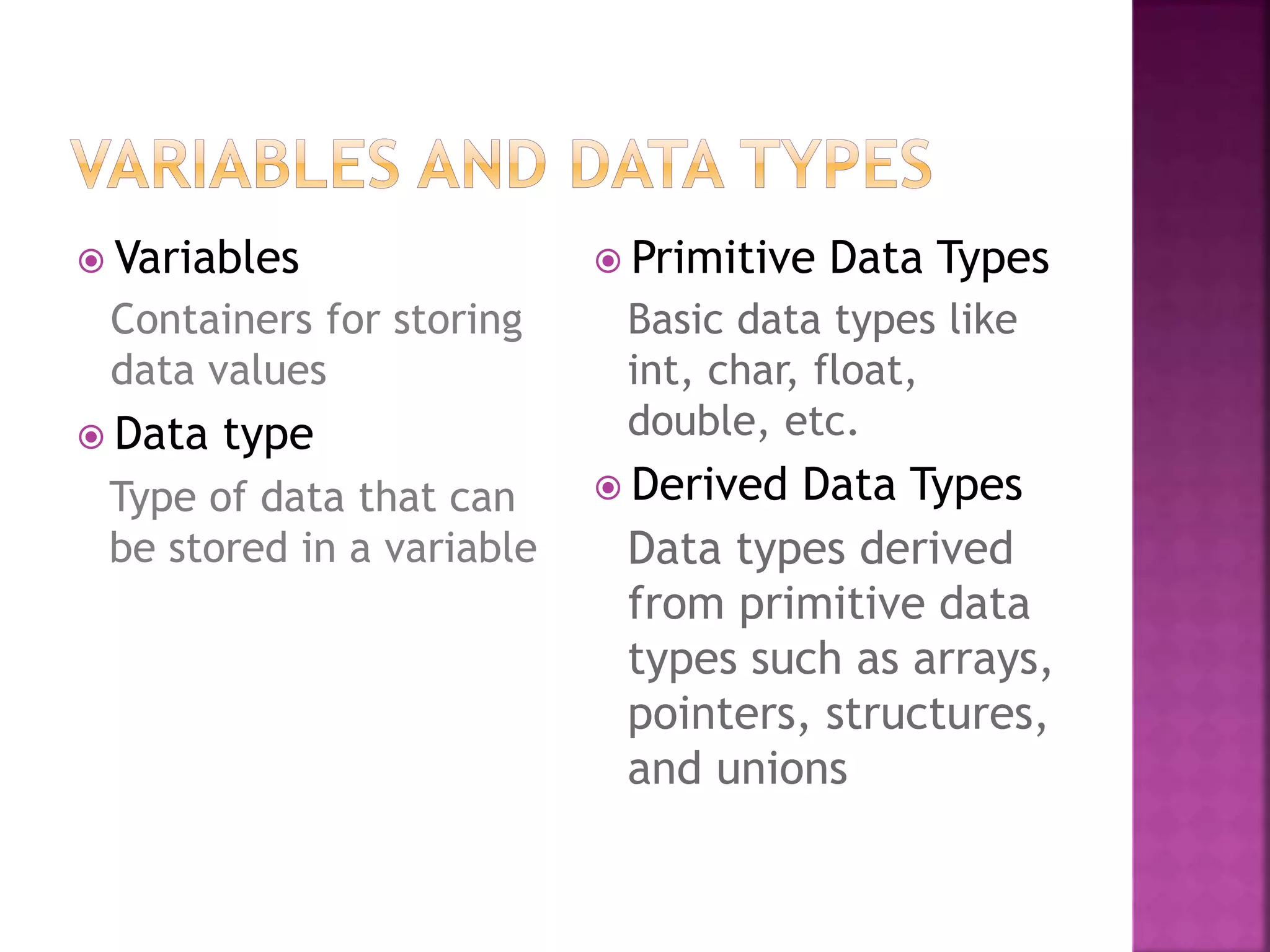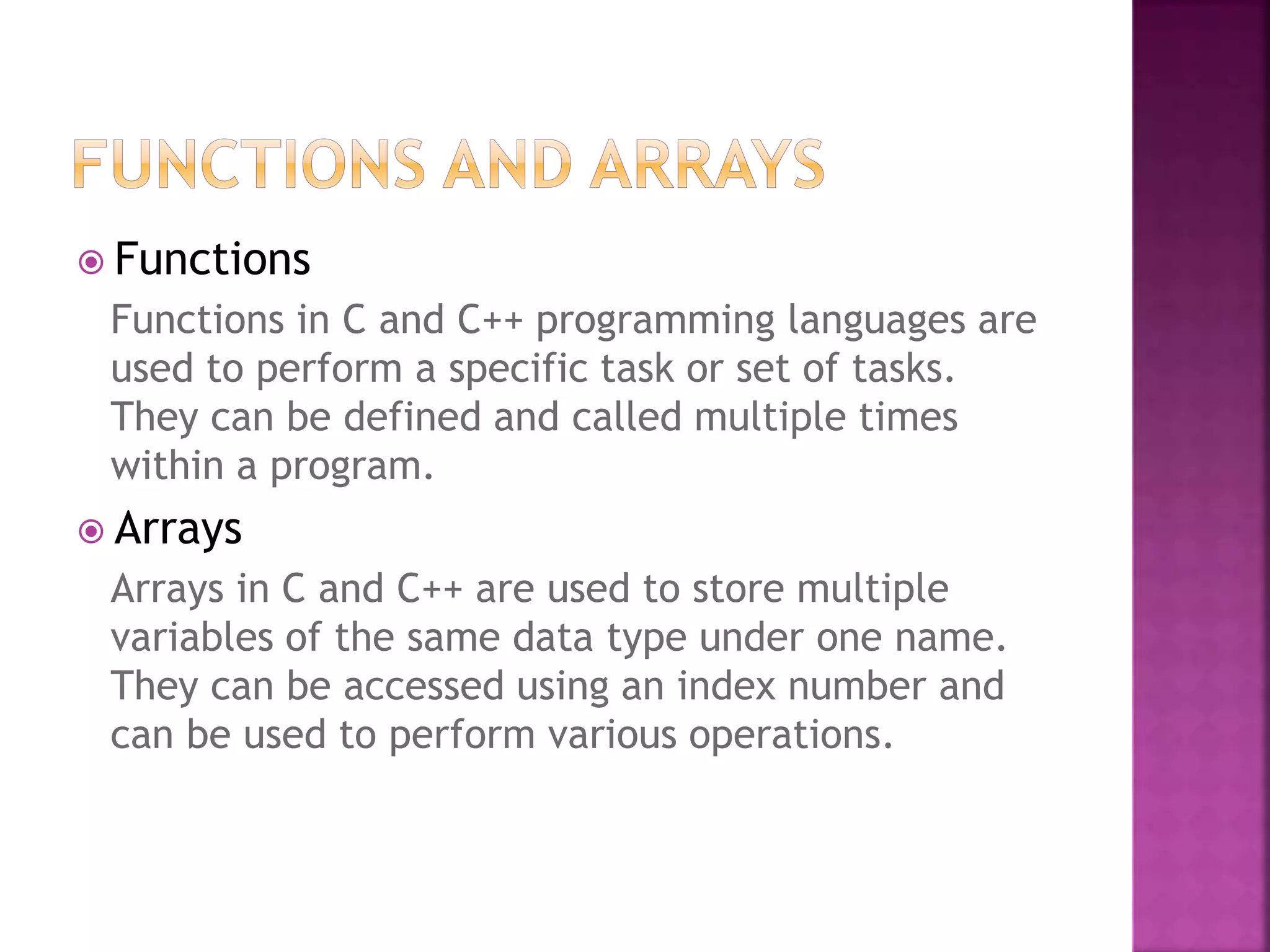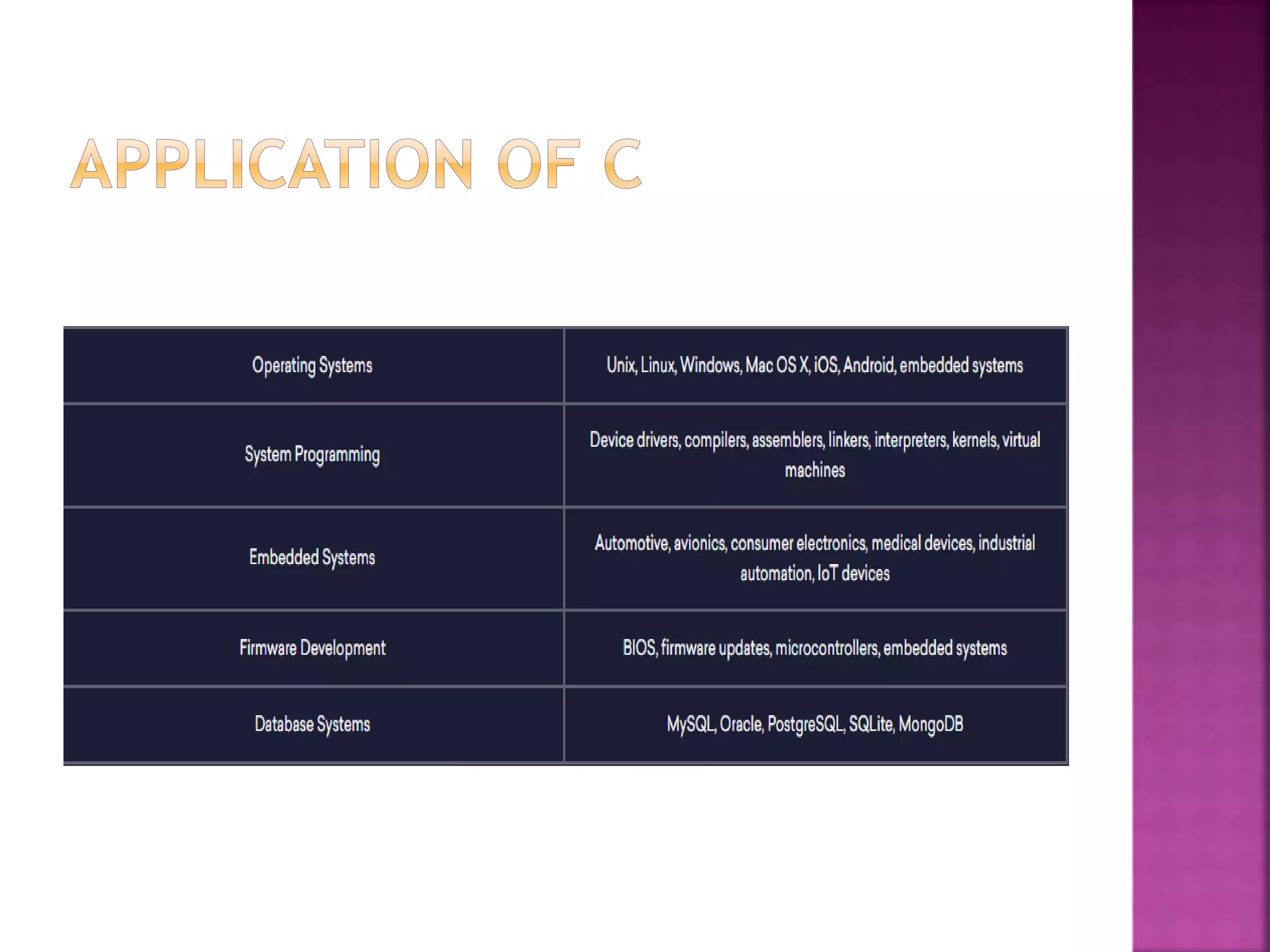C and C++ are high-level programming languages used for developing system software, application software, device drivers, and embedded firmware. They introduce basic concepts like variables, data types, conditional statements, loops, functions and arrays. While C uses procedural programming, C++ supports both procedural and object-oriented programming, providing better memory management with features like constructors and destructors. C is used for operating systems and embedded systems, while C++ is used for GUI applications and games.










